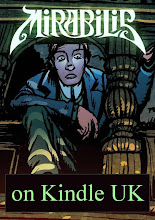When I was a kid, the comic books I bought were published under the Comics Code Authority. That came about as a result of the Wertham horror comics scare of the 1950s. If you saw a book with the Code seal on it, you could be sure it wouldn't have swearing or excessive violence, or deal with sensitive issues like drug use.
Famously, Spider-Man went out for three issues without the CCA seal when Stan Lee insisted on running a story that featured drug addiction. I remember wondering what this meant. At any rate, the sky didn't fall in.
The Comics Code was designed to control the kinds of story kids were reading. Nowadays some grown-ups are concerned about encountering stories that will upset them. And so we hear about trigger warnings and content notes, the point of which are to warn the reader: "This novel may emotionally upset you with scenes of x, y or z."
The problem with a trigger warning is that pretty much all good stories are going to shake you up, the best ones quite radically and not at all gently, and being told the way they're going to do that is guaranteed to ruin the story. So how do we ensure that sensitive readers can steer clear of anything that might upset them while the rest of us dive into the unpredictable currents of hopefully disturbing literature?
How about a Novels Code Authority? In effect, in place of putting a trigger warning on any book that could upset some readers, mark the books that include no such content. Any novel published under the Novels Code would be certified free of emotional triggers, just like those Code-approved comics in the '50s and '60s. So anybody can safely read a book with the NCA seal on the cover. If it doesn't have the seal, that tells you it might contain triggers and you've got the option not to read it.
How to THINK When You Draw WOLF HEADS! TIGER HEADS! BICEPS! KNUCKLES!
SKIRTS! And MORE!
-
To get the FREE *MONTHLY How to THINK When You Draw digital MAGAZINE* (including
NEW tutorials, a YEAR before they appear online!) just GO HERE!
Lorenz...
























No comments:
Post a Comment